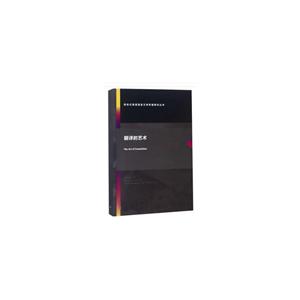-
>
鲍勃·迪伦诗歌集:1961-2012:典藏版
-
>
双城记-英文版
-
>
四级词汇词根+联想记忆法:乱序版
-
>
The secret garden
-
>
哈克贝利.费恩历险记/床头灯英语.2000词读物(英汉对照)
-
>
10000德语分类词汇联想记忆
-
>
英语词汇全书
翻译的艺术 版权信息
- ISBN:9787544657600
- 条形码:9787544657600 ; 978-7-5446-5760-0
- 装帧:一般胶版纸
- 册数:暂无
- 重量:暂无
- 所属分类:>
翻译的艺术 本书特色
列维的这部著述主要是基于文学翻译问题的理论探讨,但其框架和基础却是调和翻译研究中“二元对立”观念的尝试。其中既有将译作视为文学文本的分析,又有符号学和功能学派的语言学理论作为理据;既考量文本存在的历史语境及其一般特征,又关注文本内部的结构与自足的文体特点;既谈文学、美学的有关问题,又不离开翻译的讨论核心;既有充分的理论借鉴,又始终立足于具体的文学翻译实例。书中所举例证,并非在向读者展示文学翻译的所谓“规范”,而是作为一种参考和指引,并以讲究均衡与辩证的捷克结构主义作为理论支撑。
《翻译的艺术(英文版)/新世纪英语语言文学界面研究丛书》分为两部分,共十一章。*部分主要针对文学翻译的一般性问题进行了探讨,包括*章介绍翻译研究中不同方法存在的问题和局限、研究现状、翻译过程以及戏剧和诗歌翻译的一些主要问题。第二部分主要针对诗歌的诗律以及翻译进行探讨。从篇章的布局可以看出,对诗歌翻译的关注占据了全书的绝大部分。显然,诗歌翻译是列维在书中重点阐述的内容。
翻译的艺术 内容简介
列维的这部著述主要是基于文学翻译问题的理论探讨,但其框架和基础却是调和翻译研究中“二元对立”观念的尝试。其中既有将译作视为文学文本的分析,又有符号学和功能学派的语言学理论作为理据;既考量文本存在的历史语境及其一般特征,又关注文本内部的结构与自足的文体特点;既谈文学、美学的有关问题,又不离开翻译的讨论核心;既有充分的理论借鉴,又始终立足于具体的文学翻译实例。书中所举例证,并非在向读者展示文学翻译的所谓“规范”,而是作为一种参考和指引,并以讲究均衡与辩证的捷克结构主义作为理论支撑。 全书分为两部分,共十一章。**部分主要针对文学翻译的一般性问题进行了探讨,包括**章介绍翻译研究中不同方法存在的问题和局限、研究现状、翻译过程以及戏剧和诗歌翻译的一些主要问题。第二部分主要针对诗歌的诗律以及翻译进行探讨。从篇章的布局可以看出,对诗歌翻译的关注占据了全书的绝大部分。显然,诗歌翻译是列维在书中重点阐述的内容。
翻译的艺术 目录
Editor's introduction to the English edition
Translator's introduction to the English edition
PART I
CHAPTER 1 Translation theory: The state of the art
1.1 An overview
1.2 General and specialised theories
1.3 Linguistic methodology
1.4 Literary methodology
CHAPTER 2 Translation as a process
2.1 The genesis of a literary work and of its translation
2.2 The three stages of the translator's work
2.2.1 Apprehension
2.2.2 Interpretation
2.2.3 Re-stylisation
CHAPTER 3 Translation aesthetics
3.1 Creative production
3.1.1 Translation as an art form
3.1.2 The dual norm in translation
3.1.3 The hybrid nature of translation
3.1.4 The ambivalent relationship with the original literature
3.2 The translator's linguistic and literary creativity
3.2.1 The 'classic' translation
3.2.2 Translation tradition
3.2.3 Linguistic creativity
3.3 Fidelity in reproduction
3.3.1 Translation procedures
3.3.2 Cultural and historical specificity
3.3.3 The whole and its parts
CHAPTER 4 On the poetics of translation
4.1 Artistic and 'translation' styles
4.L1Lexical choices
4.1.2 The idea and its expression
4.2 Translating book titles
CHAPTER 5 Drama translation
5.1 Speakability and intelligibility
5.2 Stylisation of theatrical discourse
5.3 Semantic contexts
5.4 Verbal action
5.5 Dialogue and characters
5.6 The principle of selective accuracy
CHAPTER 6 Translation in literary studies
6.1 Mapping the history of translation practice
6.2 Translation analysis
6.3 Translation in national cultures and world literature
PART II
CHAPTER 1 Original verse and translated verse
1.1 Verse and prose
1.2 Rhymed and unrhymed verse
1.3 Semantic density
1.4 The verse of the source and the translator's verse
1.5 The original metre
CHAPTER 2 Translating from non-cognate versification systems
2.1 Quantitative verse
2.2 Syllabic verse
2.3 Accentual verse
CHAPTER 3 Translating from cognate versification systems
3.1 Rhythm
3.1.1 TWO types of rhythm
3.1.2 Freed verse
3.1.3 The tempo of the dacty
3.1.4 Accentual-syllabic versification
3.2 Rhyme
3.2.1 Rhyming vocabulary
3.2.2 Masculine and feminine rhyme
3.2.3 Rich rhyme
3.2.4 Imperfect and decanonised rhyme
3.2.4.1 Rhyming conventions and language
3.2.4.2 Consonance and assonance
3.2.4.3 Decanonised rhyme
3.3 Euphony
CHAPTER 4 Notes on the comparative morphology of verse
4.1 Blank verse
4.2 The alexandrine
4.3 Free verse
CHAPTER 5 Integrating style and thought
References
Index
- >
苦雨斋序跋文-周作人自编集
苦雨斋序跋文-周作人自编集
¥6.9¥16.0 - >
月亮与六便士
月亮与六便士
¥13.4¥42.0 - >
企鹅口袋书系列·伟大的思想20:论自然选择(英汉双语)
企鹅口袋书系列·伟大的思想20:论自然选择(英汉双语)
¥6.3¥14.0 - >
烟与镜
烟与镜
¥18.2¥48.0 - >
诗经-先民的歌唱
诗经-先民的歌唱
¥15.9¥39.8 - >
山海经
山海经
¥20.4¥68.0 - >
中国历史的瞬间
中国历史的瞬间
¥17.9¥38.0 - >
经典常谈
经典常谈
¥17.1¥39.8
-
2022图书×抽奖盲袋
¥9.9¥25 -
2023读书月阅读盲盒——天黑,闭眼,刀谁?
¥42.3¥158 -
2022读者节纪念徽章-三星会员专属
¥45¥45.6 -
2023读书月阅读盲盒——我什么场面没见过?
¥42.3¥158 -
2023读书月阅读盲盒——去码头整点什么薯条?
¥42.3¥158















